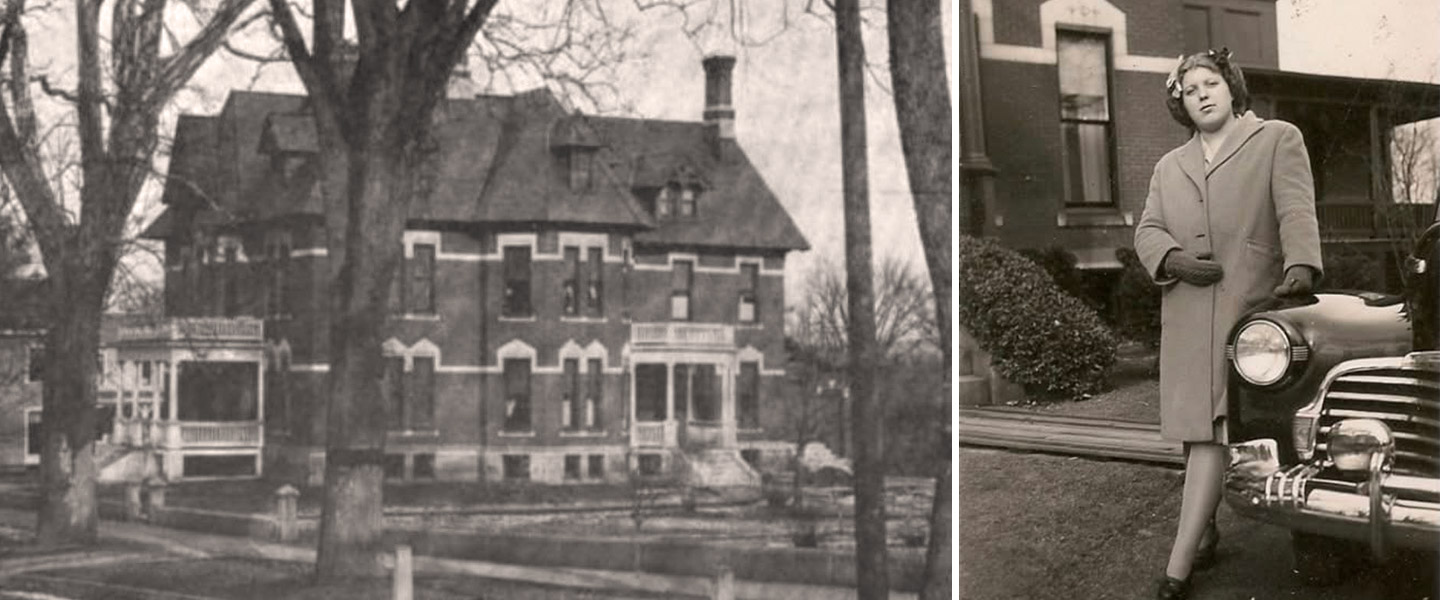Our History
John Kimball settled the property at 266 N Main Street, ten years before the American Revolution. Over the next six generations, the Kimballs built a series of homes and outbuildings on the property as the family prospered. The oldest remaining structure, now known as the “Yellow House”, was built by John’s son, Samuel, to serve as his home and law offices. In 1875, Samuel’s son, moved the house to make way for the construction of a more stylish home. Built between 1877 and 1882 the dwelling was designed by the firm of Cutting & Holman of Worcester, MA.
Built between 1877 and 1882 the magnificent brick and granite house, now referred to by locals as “The Mansion" was designed by the firm of Cutting & Holman of Worcester, MA. Featuring ornate woodwork, marble fireplaces and frescoed ceilings, this home is an outstanding example of Victorian architecture, and is considered by many to be the heart of the Kimball Jenkins Estate. Over the next forty years the property was adorned with extensive formal gardens and further expansion of the mansion. In 1929, Louise Kimball married Walter Jenkins, and his name became forever associated with the estate. The two became parents on December 3, 1930 when Carolyn Jenkins was born at Cambridge Hospital in Cambridge, Mass.
Carolyn Jenkins
Carolyn started school at the Scully School on Vernon Street in Concord on January 27, 1936. She graduated from the 6th grade and then attended Concord public schools until leaving to attend Abbot Academy in Andover, MA where she graduated Cum Laude in 1948.
Carolyn earned her B.A. degree at Wellesley in 1952, majoring in English and went on to earn her M.F.A. in Theater Directing at the Carnegie Institute of Technology in Pittsburgh, PA. During the summer of 1951, Carolyn studied short story and playwriting at Columbia University and in 1954 and 1955, she attended American Theatre Wing in New York City, learning directing styles with Lee Strasberg.
Carolyn’s love of the performing arts led to many years of involvement with theater at all levels and capacities. She participated in on and off Broadway productions, summer stock plays, university theater, community theater, even venturing into opera and radio. During her career, she had the wonderful experience of working with such theater notables as Joanne Woodward, Charles Nelson Reilly, Gerry Stiller, George Peppard, Jack and David Carradine, Burt Reynolds, Robert Benchley Jr., Angela Lansbury and Julie Andrews.
After many years away, upon the death of her mother, Carolyn returned to Concord to live with her elderly father. Besides caring him, she immersed herself with the Community Players and directed five plays. She also served on the Theater Advisory Board of New Hampshire Commission on the Arts, the Advisory Board of the American Stage Festival and the Board of the Community Players. Caroline was directing her sixth production with the Community Players when she passed away on April 28,1981. She was the last heir of the Kimball Jenkins line.
As a gift to the people of Concord, she left in trust the Kimball Jenkins Estate with directions that it be used for cultural and educational purposes, including the “encouragement of art." It is from this magnanimous gift that the highly acclaimed “School of Art” at Kimball Jenkins was born.
Today, several buildings on the estate have been refitted to provide space for art studios and classrooms. Additionally, the Mansion and the one time Carriage House provide gallery spaces where six exhibitions are presented annually featuring works from local and regional artists. To help support the operation of the estate, the grounds are available to rent for private and community events.

